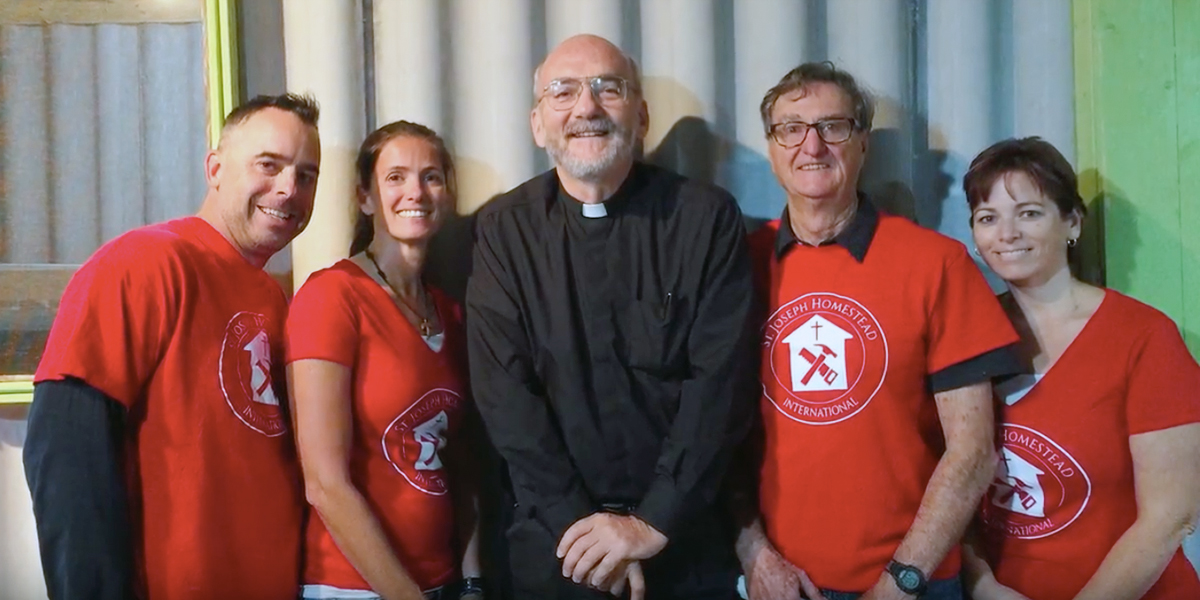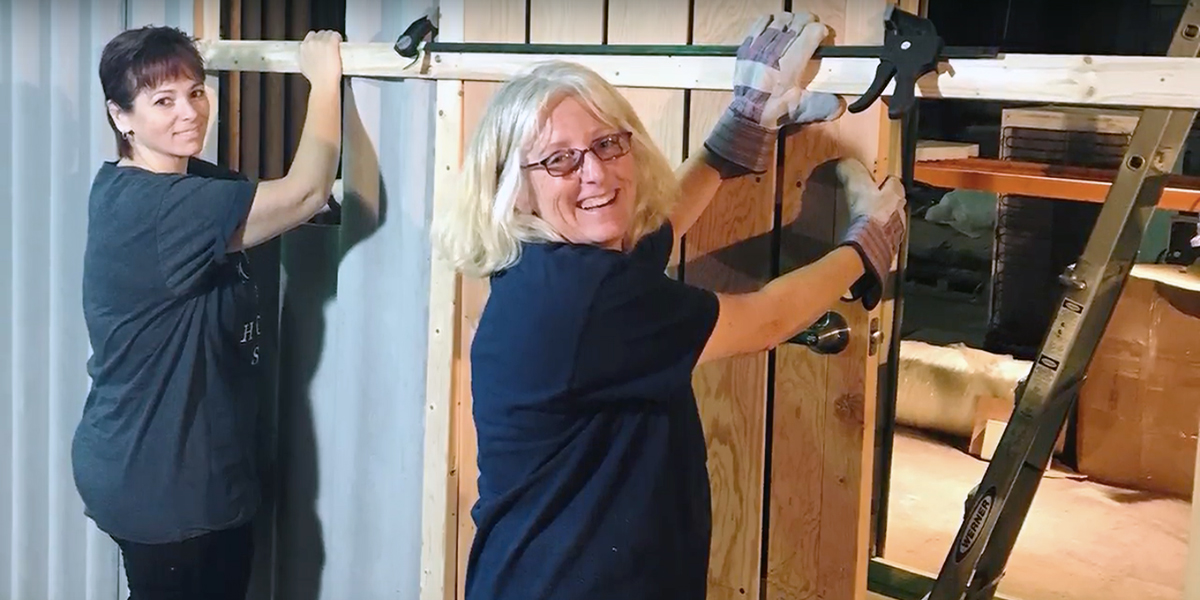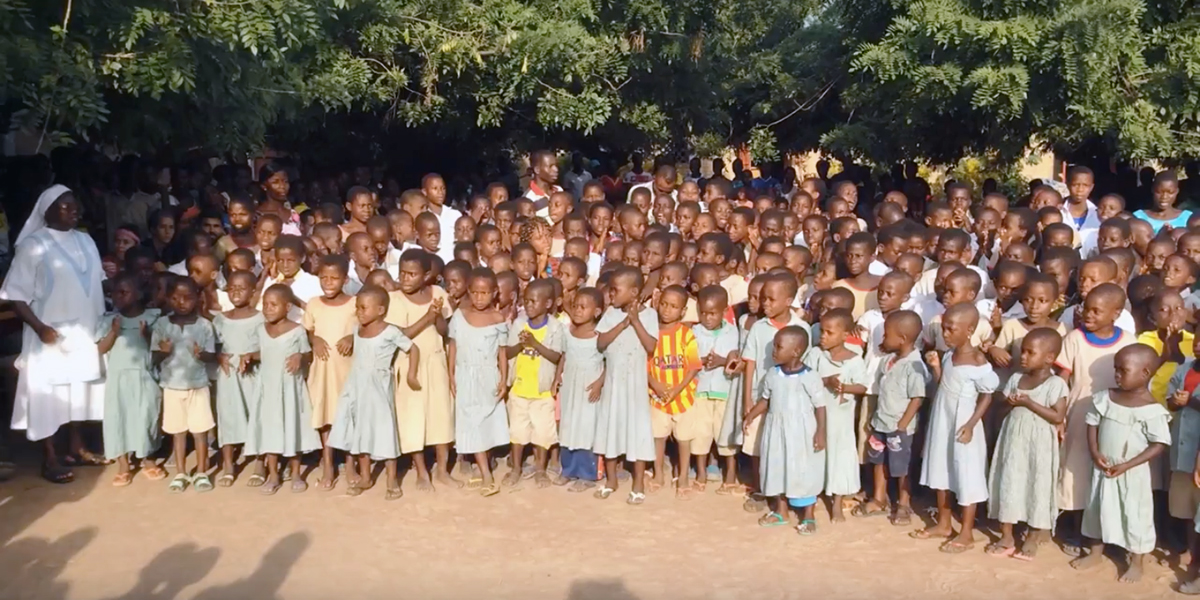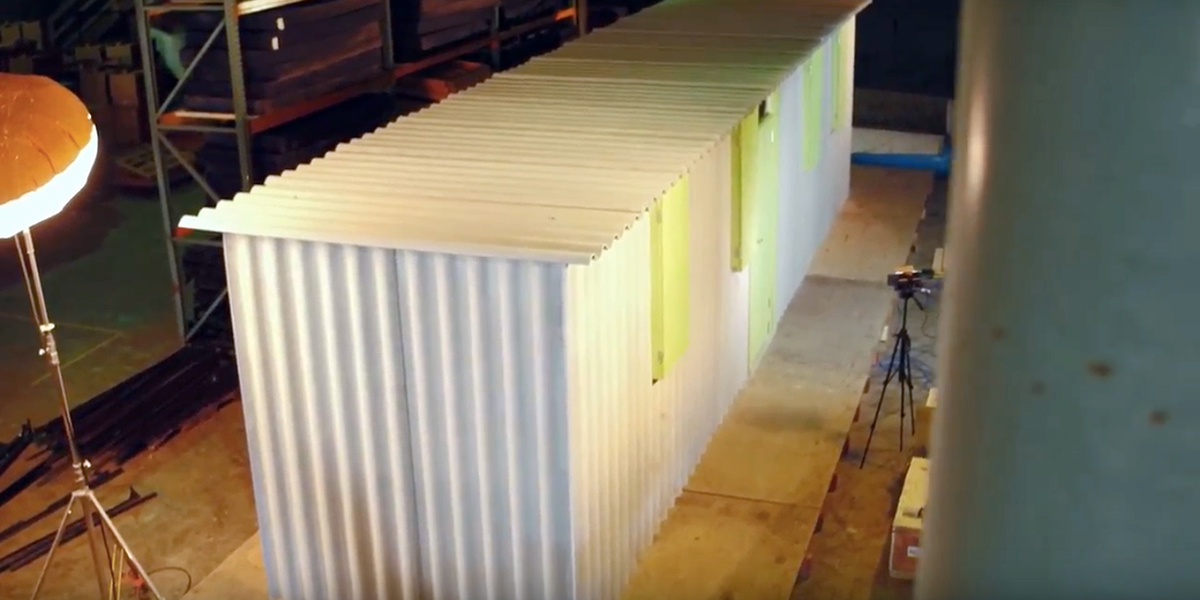Heirs of Argentine architect provide housing for mission in Togo.A missionary priest from Africa speaks at a church in Maryland, raising money to house teachers in his new Catholic school.
Some folks sitting in the congregation just happen to be the descendants of a prominent architect who had designed sturdy, affordable houses for low-income people.
The encounter leads to a project called St. Joseph Homestead International, which is gearing up to build the houses in West Africa this summer.
The visiting priest is Fr. William Ryan, an American who has been serving at Our Lady of Guadalupe mission in the village of Atchanvé, Togo, for about 12 years. The family is that of Tony von Pieschel, whose grandfather was the noted modernist Argentinean architect Antonio U. Vilar.
“My father had inherited these affordable housing plans from his grandfather,” said Angie Cummings, who was visiting von Pieschel from West Virginia when Fr. Ryan was speaking. “He said, ‘You know what? These might work. We haven’t built them yet, but we could ask Fr. Ryan.'”
Fr. Ryan asked the family if they could build a prototype, see how it works, and raise money for the project. The family accepted the challenge.

Cummings said in an interview that she and her husband, Gary, and five or six volunteers, none of whom had any building experience, found the plans to be “so simple” and built a prototype in a warehouse in Kearneysville, West Virginia. They will be disassembling it and putting it in a container to be shipped to Togo for re-assembly in July.
Fr. Ryan told the family that missionaries from the Fellowship of Catholic University Students work with him every summer and that they might be able to help with the construction.
Atchanvé is located about two and a half hours north of Lomé, the capital of Togo. The mission encompasses a large rural area of more than three dozen villages. It takes about an hour and a half to drive from one end of the parish to the other over very bad roads. There are 13 “secondary stations” in the parish: villages where a lay catechist leads the people in prayers on Sundays and offers baptismal preparation and faith formation.

The religious makeup of the former French colony is 51 percent indigenous beliefs, 29 percent Christian and 20 percent Muslim, according to the CIA Factbook.
Fr. Ryan, who first lived in Togo as a Peace Corps volunteer in the 1970s, discerned a vocation to the priesthood there. He was ordained in the Archdiocese of Washington in 1980 but asked his bishop for permission to work in Togo. He has built a church, brought in an order of sisters and dug wells.
Recently, Cummings said, “he started really focusing on building schools, and that has brought a lot of the kids in the other villages to come to these schools and it’s been a great evangelization tool. He’s focused on finding housing for the kids. If they’re from really far away they can stay there for the week.”

In order to encourage talented educators from the city to commit to teaching at the school, Fr. Ryan needs to provide decent housing for them as well.
Von Pieschel, who serves as president and treasurer of St. Joseph Homestead International, had already been keeping his grandfather’s legacy alive. The foundation’s website said that after he saw some of the living conditions in Guatemala, he revised and recreated the designs. He said in an interview that each house has about 300 square feet of living space, with a kitchen, a bedroom and a bathroom. The material, a type of cement board, uses synthetic reinforcing fibers along engineered lines, comparable in strength to US residential and architectural siding. The website says the plans consist of a “patented system that uses eco-friendly materials and a unique assembly system that make it very easy to assemble by volunteers.” Ten houses, disassembled, can be packed into a cargo ship container. This makes it an attractive option for natural disaster relief.

Antonio Vilar, the original designer, was a “devout Catholic who was a tireless educator and supporter of trade schools to help better the lives of the less fortunate,” von Pieschel said. “He saw firsthand the substandard living conditions of families in areas from the northern desert border to Bolivia to the farthest south in Patagonia.”
Over the years, “several iterations [of Vilar’s plans] were built with the aim to design a low-cost house with a minimum of decent living conditions for raising a family,” said von Pieschel. He said that about a dozen such houses were built for a mini-urban development in Buenos Aires. “They were later assigned to the Medical Sciences University (UBA) and used as outreach clinics and preschool care,” he said.
Now they will be put to use on a very different continent.








